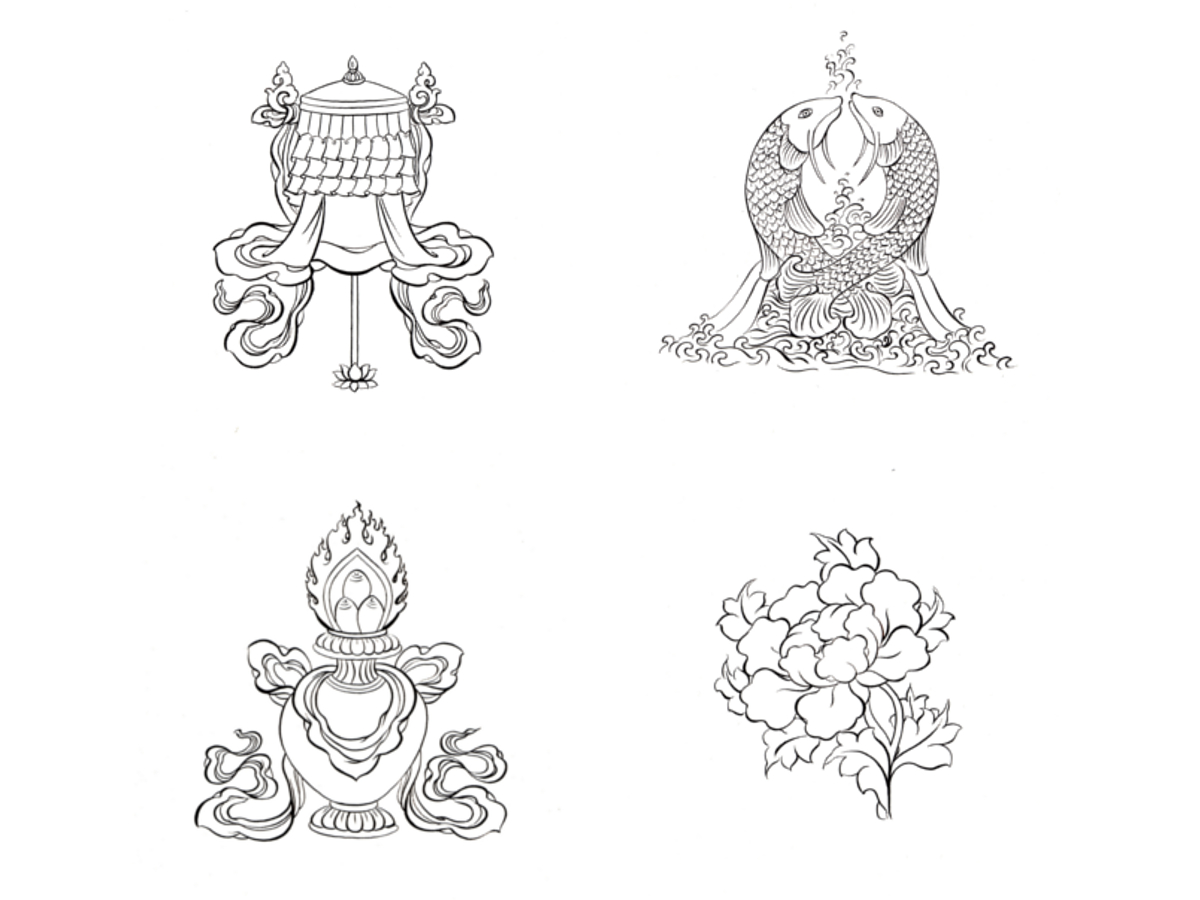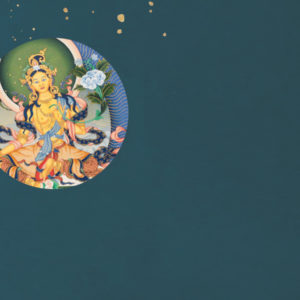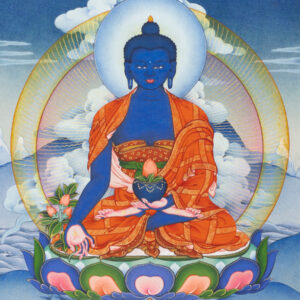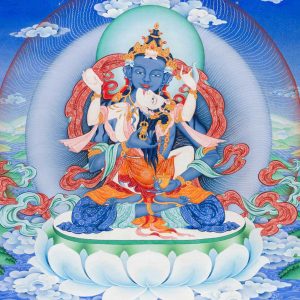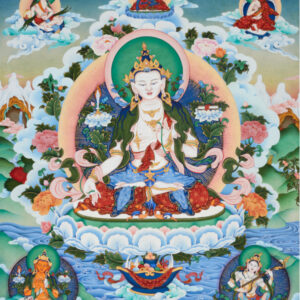The eight symbols in detail
Four of the eight symbols of good auspicious.
THE VICTORY BANNER
The victory banner in Sanskrit – dhvaja – and in Tibetan – rgyal-msthan – is generally made of wood and fabric, but there is also metal. It is a narrow fabric cylinder with three or more silk strips adorned with ribbons of the five colors of the Buddha families (white, red, green, blue, yellow).
It is found inside temples and monasteries, suspended from the ceiling or as an ornament of the roofs and at the end’ of the long prayer rods. It can also be found on the roof of private homes.
It represents the victory of Buddhist teachings, the victory of knowledge over ignorance and the victory of Dharma over all obstacles to the ultimate understanding of reality.
THE PAIR OF GOLDEN FISHES
The golden fishes in Sanskrit – suvarnamatsya – and in Tibetan – gser-nya – are a symbol used since ancient times in fact originally in India they represented the sacred rivers of the Ganges and the Yamuna with fishes.
This symbol consists of the representation of two gold fishes placed vertically and parallel, or slightly crossed. The fish represents the lack of fear, the overcoming of obstacles, the victory over all suffering and the achievement of liberation. Beings move free in acquiring awareness of the ultimate nature, just as fish swim free in the water by their own nature.
In Tibet the two golden fishes are represented only together with the other eight symbols
THE TREASURE VASE
The vase of wealth in Sanskrit – kalasa – and in Tibetan – gter-chen-po’i bum-pa – is a round vessel with a short, narrow neck that then widens to form a decorated border. The opening of the vase is closed with a large jewel that indicates that it is a vase of wealth.
In Tibetan Buddhism vases of different shapes are used according to ritual practices.
The vase of wealth symbolizes spiritual realization, perfection of Dharma, health, longevity and prosperity.
THE LOTUS FLOWER
The lotus in Sanskrit – Padma – and in Tibetan – ka dag – is one of the most famous Tibetan symbols. It symbolizes purity because, although it has its roots in the mud of the ponds, it produces white flowers above the water. It therefore represents purity, particularly spiritual purity, which is why the images of Buddha and Bodhisattva are often represented sitting on a cushion surrounded by open lotus flowers.
It also represents the order of the cosmos and for this reason it is used as a model for the realization of mandalas.



